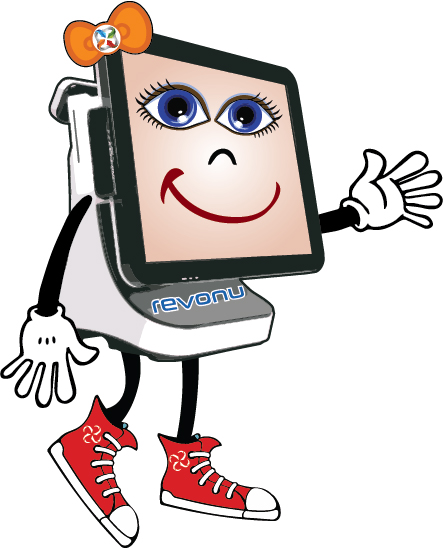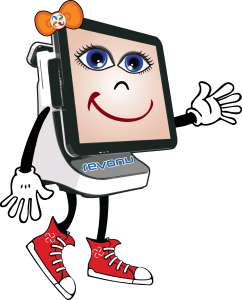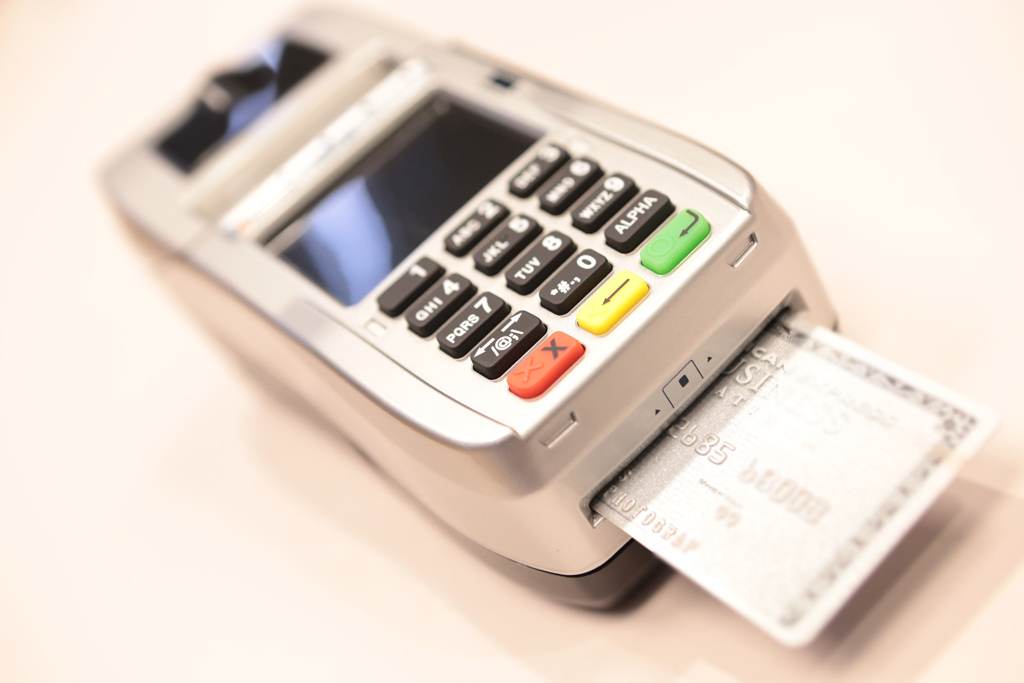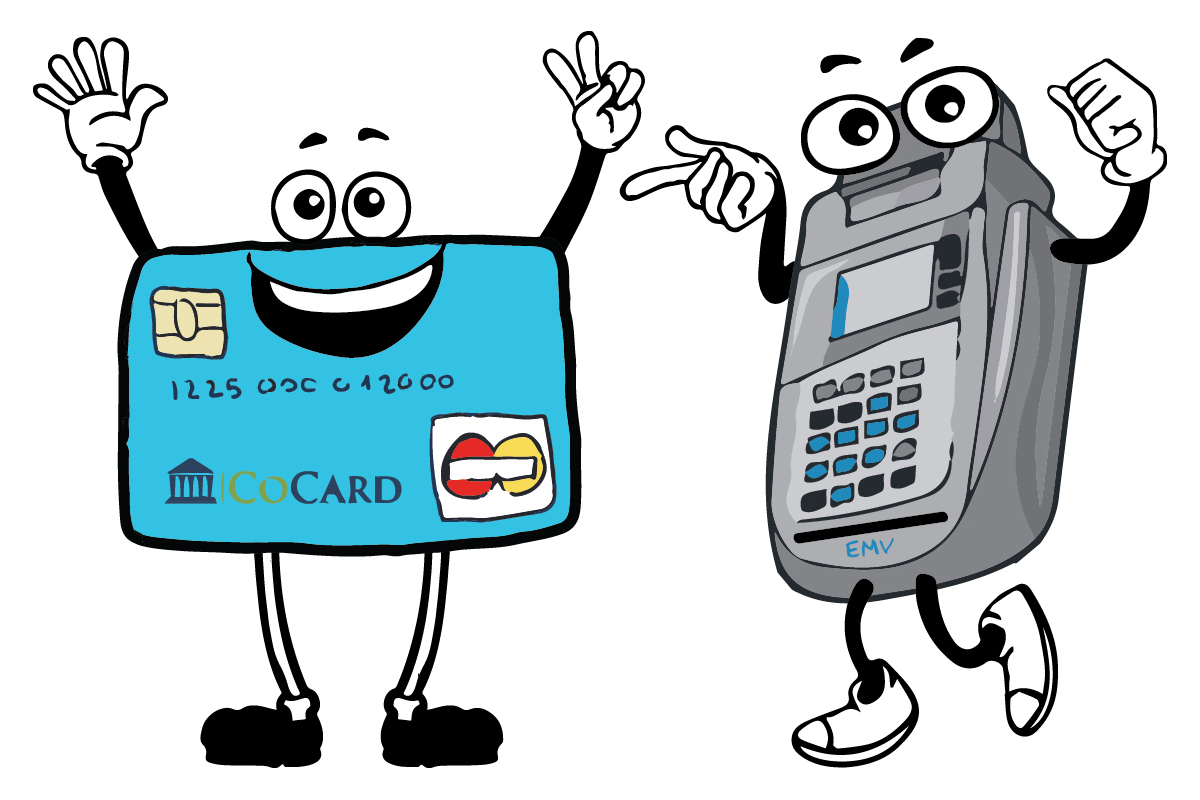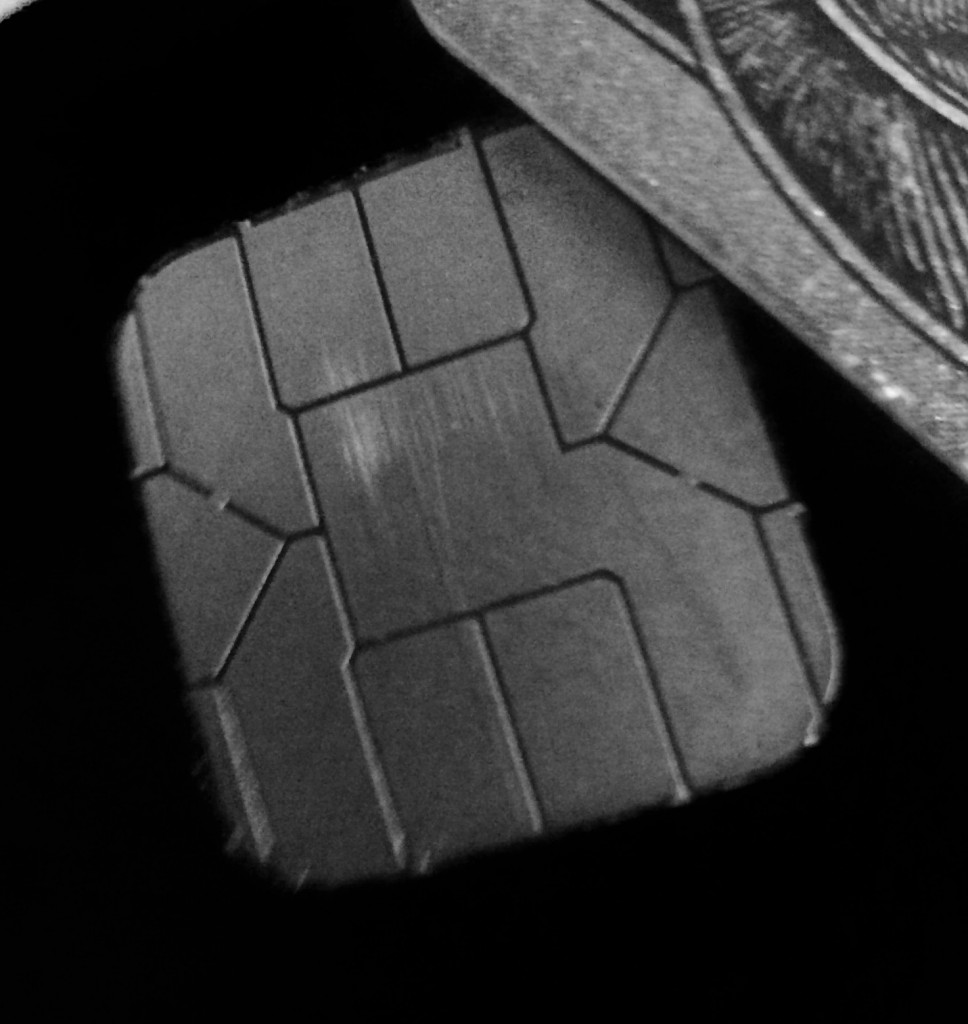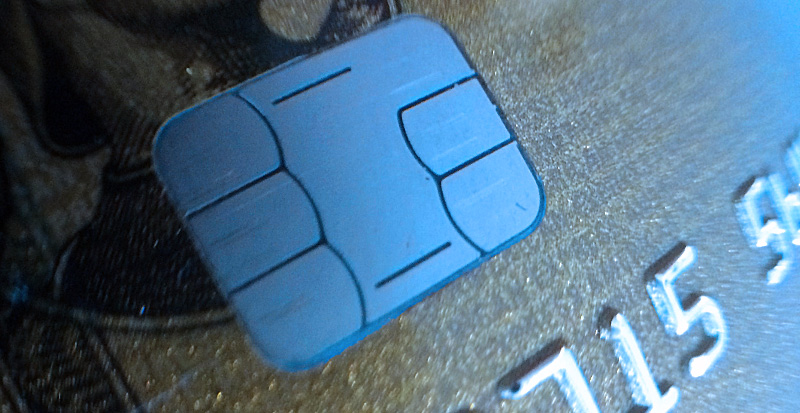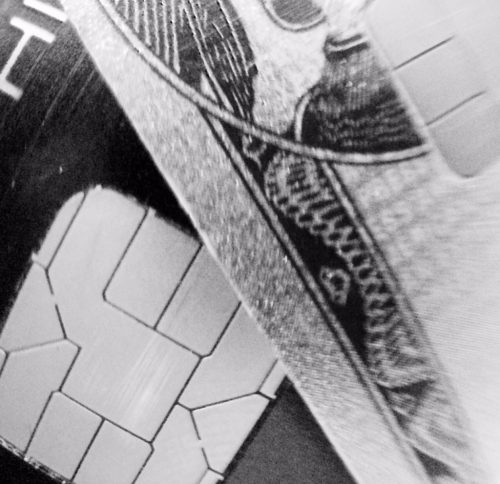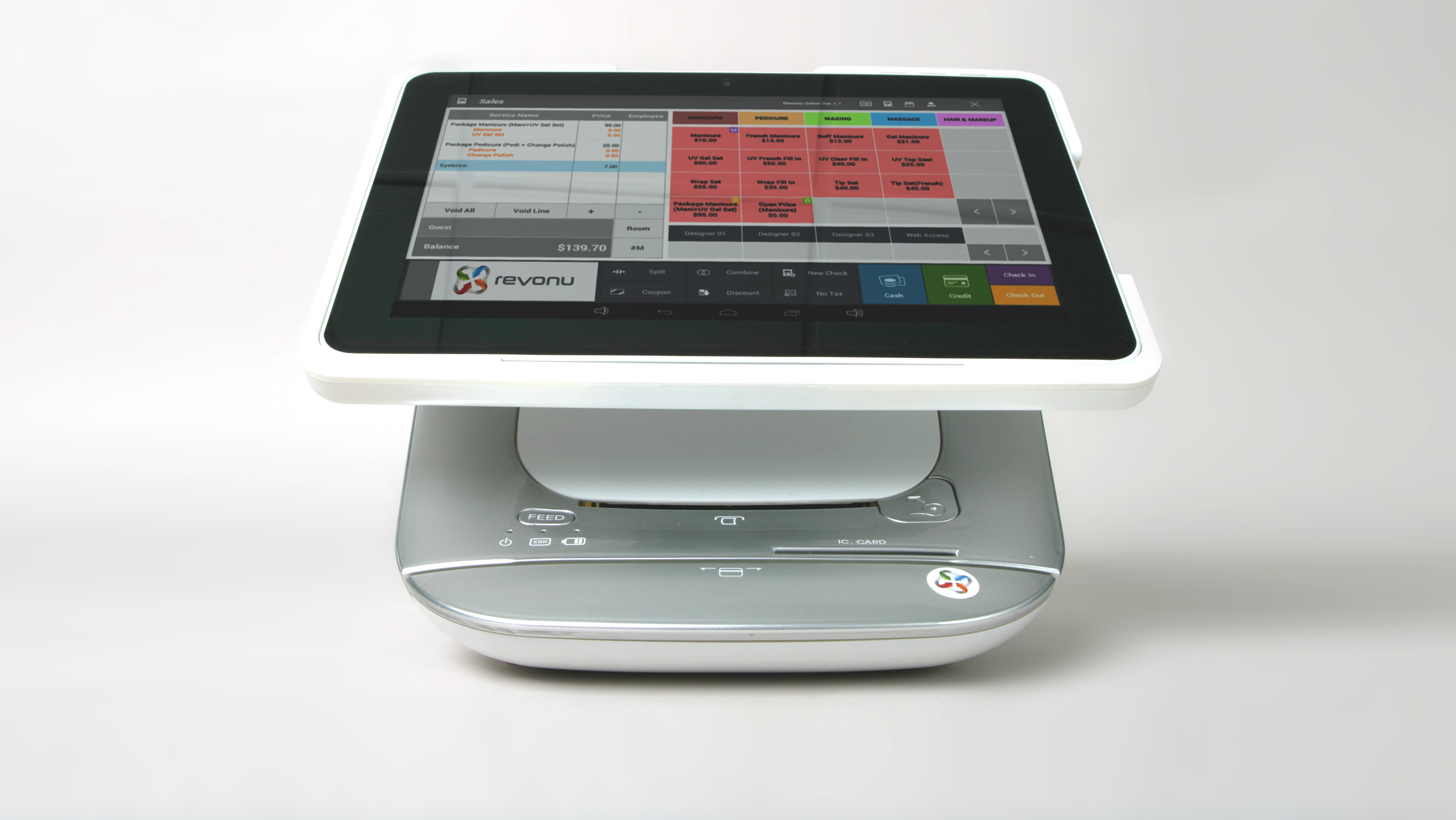Pssst! Did You Know That COCARD Has a Live Chat?
Do you have any burning questions? Not feeling like picking up the phone? Would you like some more information about credit card processing, POS systems or have a question about your merchant account with COCARD? Then chat away!
I’m REVONU your POS system pal, and I’m here to tell you about our brand new live chat feature. It’s conveniently located on the bottom right corner of the screen on our website, www.cocard.info.
Look in the right hand corner of your screen right now, click on the blue box and one of our fanatical support members will answer any questions you may have, so don’t hesitate to chat us! Hope to talk to you soon!
Read MoreRead MoreEMV Pocket Glossary
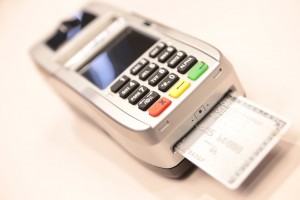 With the liability shift here, we know that you’ve already got a lot on your plate. So we’re going to just take it easy and go over a few terms you may have already seen or will see as you continue to learn about EMV. This list can serve as a simple pocket reference during the transition. Print it out even, and refer to it as needed when reading your next article or blog post about EMV. We want the transition to be worry-free.
With the liability shift here, we know that you’ve already got a lot on your plate. So we’re going to just take it easy and go over a few terms you may have already seen or will see as you continue to learn about EMV. This list can serve as a simple pocket reference during the transition. Print it out even, and refer to it as needed when reading your next article or blog post about EMV. We want the transition to be worry-free.
EMV: Short for Europay, Mastercard, and Visa, the developers of the card
Chip-enabled card: A credit card enabled with a microchip; also referred to as “chip and pin” or “chip and signature”, depending on the cardholder verification method
Fraud: the criminal use of a person’s credit card information to make unauthorized transactions
With the transition to EMV terminals, the US aims to decrease fraud. The US currently accounts for nearly half of all worldwide fraud. On a positive note, the EU has decreased card fraud by 80% since completing its transition to EMV cards, which means the US transition should be successful.
Liability shift: Starting October 1st the responsibility for fraudulent transactions switched to the party with the least EMV-capable technology
If fraud occurs with a non-EMV bank card, the bank is responsible. If fraud occurs as a result of a merchant’s POS system that can’t accept EMV-cards, the merchant is responsible. Only 20-30% of merchants are expected to use EMV-capable terminals by October 1st, with the remainder throughout the three to five-year transition period. So if you’re not there yet, don’t freak out. COCARD can work with you to determine a POS system that is right for your company’s needs.
Transaction authorization: When a chip card goes through rules set by the card-issuer to determine whether the transaction can be authorized; transactions can be authorized either online or offline
Card authentication: the process of making the card authentic or unique by providing a one-time code for the transaction
If someone does manage to actually steal this code and use it, the transaction would be declined since the code was already used.
Cardholder verification (CVM): how the issuer and merchant verify that the cardholder and the person with the card are one and the same. An EMV-terminal might require a pin, signature, or for low risk transactions, no verification method.
Mag-stripe card: Cards with a magnetic stripe on the back. Much of the world has already switched completely to EMV-cards, and the full-scale transition in the US is currently underway. Cardholder data on mag stripe cards is easy to steal using a simple card reading machine.
Cryptogram: A one-time code created during online authorization; a cryptogram validates that the chip and issuer are not counterfeit
That’s it. We hope that this glossary of terms is short and sweet, and that it provides simple definitions for terms that are often times used when discussing EMV.
And now that October 1st has come and gone we’re sure that your still standing strong. So don’t worry. Instead, continue to read up on EMV and take the information that is most valuable to you as a business owner. If you’ve got any questions, we at COCARD will be happy to assist. Feel free to give us a call at 800-317-1819.
Read MoreRead MoreThe EMV Files: A Conversation with Chip and Terminal
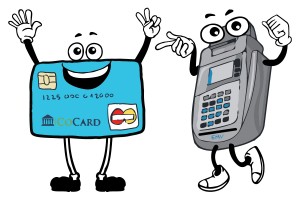
Last week we introduced Chip and Terminal, who have a lot to say about EMV, mainly because they are the main components in EMV technology. So we were lucky enough to be able to book a slot on their busy schedule this fall season to interview them and ask them a few questions. Personally, we think they’d be great on Bravo, but they might have competition with a real housewife or two.
COCARD: Hi Chip. Hi Terminal. We’re so glad that we could ask you two a few questions about EMV. Really, we’re honored. Could you just start by telling us a little bit about yourselves?
Chip: Sure, well I’m Chip, and I’m the small chip that’s embedded in credit cards with EMV technology. Banks have already started transitioning to cards including yours truly, and plan on having all cards in the US utilizing EMV technology within five years.
Terminal: I’m Terminal, and all cards containing chips, will be dipped into terminals to be read. I like to say that I give new meaning to dipping the chip. I provide a one-time code to authenticate the card. Because of this, your data is protected, preventing a person from stealing a code that is only good for one transaction.
COCARD: So when did you first realize that you worked so well together, that you were a great team?
Terminal: I’ll take this one Chip. We’ve had a couple of countries really benefit from EMV technology. There’s the UK, which reduced fraud by more than half between 2004 and 2013 upon implementing EMV cards. Then there’s Canada, eh, that started the EMV roll-out in 2003 and reported fraud of $29.5 million (CAD), down 79% from 2009, which was $142 million (CAD). So I would say that it’s taken some time to see the effects, but in the past few years, we’ve really seen the impact that EMV cards have had in reducing fraud for many countries around the world.
COCARD: EMV is new for many business owners. So I’m sure you understand how such a change might make people anxious. What would you say to assuage the fears of business owners everywhere?
Chip: Well, first the sky is not falling. It might seem like it, but it’s not. The proof is that it’s already been successful in other places, and the US is simply one of the few developed nations that has not adopted this technology. EMV, through its authentication process, is really what makes these cards, our cards, more secure. So they are a safe and secure way to pay for things. We think that any business owner can appreciate the feeling of comfort that security brings. The big thing for business owners to remember is that banks have a five year plan and that only 21% of US cards will have the embedded chip by the October 1st liability shift..
COCARD: Anything else you’d like business owners out there to know?
Terminal: We just want you all to stay informed. Keep learning. The more you know, we think the less you’ll feel out of your element with something that can benefit your business.
COCARD: Thanks Chip. Thanks Terminal. You were both great. We appreciate that you were able to take time out of your busy schedules—you two are in high demand—to spend a few minutes with us at COCARD. Have a great day.
Chip: You too.
Terminal: Yeah, thanks COCARD.
Read MoreRead MoreMeet a member of YOUR COCARD support team, Salvador
 Salvador was born in San Bernardino, CA and raised in Salt Lake City, UT. He now makes his home in Duluth, GA with his wife, Nelly and daughter Evelyn. Salvador plays soccer, hikes and loves taking pictures (mostly of Evelyn).
Salvador was born in San Bernardino, CA and raised in Salt Lake City, UT. He now makes his home in Duluth, GA with his wife, Nelly and daughter Evelyn. Salvador plays soccer, hikes and loves taking pictures (mostly of Evelyn).
He is a great cook and thankfully likes to eat what he cooks!
When I asked Salvador if he could meet anyone in the world who would it be and why he responded: myself, it would be very interesting to see me through someone else’s eyes.
Around the office Salvador is known for his relentless testing abilities, we like to think of this as his super power. If we have new technology or equipment we are beta testing we want Salvador to do the testing so that we can repair, replace or upgrade before our customers ever use the technology or equipment. He really is a super hero!
Call our support team and ask for Salvador, he is ready to support your POS and your merchant account with one call.
Read MoreRead MoreA Sky Without Limits, or Infinity and EMV
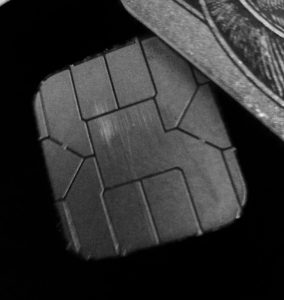 Chicken Little once said that the sky is falling. Yet it still remains intact above us. So while the transition from magnetic stripe to EMV might seem like a shift of cataclysmic proportions, the sky is not falling. Your company will successfully transition from magnetic stripe to EMV (many already have), and next time you look outside your window, you’ll see the billowy clouds resting above, and not on the ground.
Chicken Little once said that the sky is falling. Yet it still remains intact above us. So while the transition from magnetic stripe to EMV might seem like a shift of cataclysmic proportions, the sky is not falling. Your company will successfully transition from magnetic stripe to EMV (many already have), and next time you look outside your window, you’ll see the billowy clouds resting above, and not on the ground.
Yet we also understand that with anything new comes fear. It’s normal. So we’ve put together a few facts to calm your nerves. We want you—the sagacious business owner that you are—to continue to make calm, smart decisions over the course of the transition.
Are you with us? Well, here goes:
- A transaction using EMV technology will take around 60 seconds compared to under 2 seconds with a magnetic stripe card. Magstripe cards are swiped and provide the terminal with the credit card number and expiration date, which can be easily copied by a card reader. EMV terminals, on the other hand, require customers to “dip” the chip and verify customer data, which takes just a short while longer. During this time, the Chip and Terminal begin a conversation. Chip says, “Please authorize this transaction.” Terminal replies, “I’ll need to make sure you’re valid. I’ll also need to provide your card with a special code unique to this transaction because we can’t have any fraudsters trying to take your info.” Chip responds, “Sounds great.” Terminal says, “Now please sign, or enter your pin number.” EMV takes a few more seconds than a magstripe transaction, but your data is more secure.
- Don’t panic. Although EMV has been adopted in Europe for over a decade, cards in the US still have a magnetic stripe. Card companies have accounted for the ongoing transition by allowing terminals to still accept magnetic stripe cards. Card issuers expect the full transition to take anywhere from three to five years.
- The term “liability shift” sounds pretty intense, like if you’re not prepared, the earth will shift, and you’ll fall off the edge of it. Oh, Copernicus. Well, flat-earth jokes aside, the liability shift is not that cruel. It is simply a method to eliminate fraud. Starting October 2015, the party—either the business or banking institution—with the lesser technology will be responsible for the cost of fraud. Instead of thinking of the liability shift as a way for others to make money off of your hard work, think of it instead as a way to ensure all parties are working together to eliminate fraud, which cost US consumers $16 billion last year alone.
In short, the sky is not falling, and EMV is not the end of the world. Instead, it seems to be the beginning to new possibilities for business owners. It might be an uncharted territory, but EMV will provide companies with the tools to chart their own course by allowing them to directly address fraud, a concern that leaves many involved feeling powerless. So next time you look at the sky, we at COCARD hope that you view it with possibility, and nothing less than that.
Read MoreRead MoreThe Truth About EMV!
True. Bats see just fine, and in spite of the idiom “blind as a bat”, bats really have no reason to serve as the benchmark for people with less than perfect eyesight.
Popular myths aside, fall is indeed upon us, which means that the start date of October 1st for the liability shift is near. Are you prepared?
To test your EMV preparedness, see if you can determine whether each statement is true or false.
There really is no proof that EMV is a safer way to protect data.
False, false, and false. Let’s look at two case studies. Since introducing EMV technology in 2004, the United Kingdom reported 62% less fraud in 2013. Canada has also reduced fraud losses to $29.5 million since transitioning to EMV technology. Fraud in Canada is down 79% from losses in 2009 ($142 million). With EMV technology responsible for the significant decrease in fraud in the UK and Canada, the technology aims to also decrease fraud in the United States as well, which currently accounts for nearly half of fraud worldwide.
All businesses—small and large—should be EMV-compliant.
True. No business is too small to adopt EMV technology. While it might be assumed that businesses with larger sales should adopt this technology, small businesses should also be sure to protect their sales as well. Leave it to a pesky fraudster to think ahead and target a small business because the merchant assumed that fraudsters only targeted larger companies. Prevent being caught off guard by being one step ahead of those who want to steal from you.
Adopting EMV technology is expensive.
For the business owner that thinks long term, false. The average cost of an EMV terminal is between $400 and $700. The average bill on a fraudulent card is $399. You do the math. While one fraudulent transaction probably won’t destroy you, starting October 1st, you, and not the associated bank, will be responsible for repaying losses resulting from fraud if your business is NOT EMV compliant. You will also be penalized for the fraud that could have been avoided by installing an EMV card terminal. When you add it all up, $400 to $700 is a small investment compared to the possible cost of not adopting the technology. What’s more, card processors such as COCARD often discount card readers. So call us today, and we will work within your budget.
In addition to business owners, employees should also be trained on how to properly use EMV technology.
True. While you are schooling yourself on the ABC’s of EMV, don’t leave your employees in the dark. Whether through workshops, a training program, or printed manuals, employees should understand how card terminals work for both themselves and customers who need assistance. COCARD can work with you to develop a training program that’s right for your company.
So how did you do? Did you get the right answers? Regardless, this information will be useful as your company prepares for the coming liability shift and transition to EMV. With foresight, you can protect your company from fraud and ensure, to the best of your ability, an environment that maximizes both security and profits. There’s nothing batty about it, EMV we mean.
Read MoreRead More
EMV FAQs
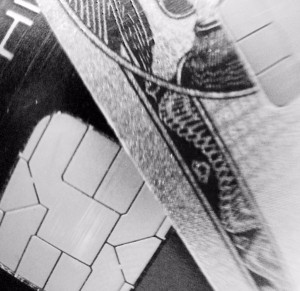 Watch out—the future has arrived. And they call it EMV. As the target date for businesses to accept EMV payment cards draws near, make sure your business is ready to transition seamlessly from magnetic stripe cards to EMV. October 1st is upon us. Are you ready?
Watch out—the future has arrived. And they call it EMV. As the target date for businesses to accept EMV payment cards draws near, make sure your business is ready to transition seamlessly from magnetic stripe cards to EMV. October 1st is upon us. Are you ready?
This list of FAQs will help you answer lingering questions and stay abreast of new developments with EMV technology.
What does EMV stand for?
It is an acronym for its developers Europay, Mastercard and Visa.
What’s the main difference between the cards we use now and EMV cards?
Magnetic stripe cards are the cards currently used in the United States and have a magnetic strip on the back. These cards are swiped through a card reader and contain static financial information that can be easily duplicated by card readers. EMV cards, on the other hand, contain a microchip that produces a new code with each transaction, preventing fraudsters from gaining access to sensitive data on the card. EMV cards are therefore more secure than magnetic stripe cards, and are responsible for a worldwide decrease in fraud.
How will switching to EMV directly benefit my business?
Great question. EMV will benefit your business threefold. First, your risk of chargebacks based on fraudulent transactions is greatly reduced. Whereas banks bore the brunt of the financial weight for fraud in the past, companies that have not adopted EMV technology will now be held accountable starting October 1st, when the liability shift starts. Adopting EMV technology will protect your business from costs associated with fraud. Second, as technology evolves faster than you can say Darwin, EMV is simply the beginning. Most of the hardware that accepts EMV will also allow your business to accept payment innovations such as mobile apps (i.e. mobile couponing and loyalty programs) and contactless payments. Third, you will be able to accept payment from visitors from other countries. Much of the world has already adopted this technology and no longer uses magnetic stripe cards. So prepare your business to increase profits by switching to a payment technology that more people can use.
I’ve been hearing the term “liability shift” a lot lately. What exactly is it?
It is when liability for card fraud switches from banking institutions to merchants. On October 1, 2015, businesses that aren’t updated to accept EMV cards will be held responsible for card swiped transactions on EMV capable cards that are found to be fraudulent. And penalties can be costly, particularly for small businesses. However, if your business is EMV-compatible, you will not be held accountable for fraudulent transactions.
As a small business owner, every penny counts. How much will it cost me to install an EMV-capable terminal?
EMV card readers cost between $400 and $700 but are often discounted through payment processors such as COCARD. Speak with us today—your EMV solution might even be free.
One thing to remember is that as the United States fully transitions to using EMV technology, cards will include both the microchip and magnetic strip. The process is expected to take anywhere between three and five years.
COCARD aims to develop our reputation as experts on EMV. We will continue to keep you posted on new developments and new ways of looking at this groundbreaking technology.
Read MoreRead MoreSay goodbye to a one-size-fits-all solution for your business and say hello to Revonu!
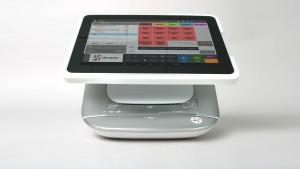 Integrated hardware,cloud software & payment solutions.
Integrated hardware,cloud software & payment solutions.
Spend more time on the front-end of your business with our simple and cost-effective combined point of sale solution. By pairing state-of-the-art hardware with reliable cloud software and PCI compliant merchant processing, we’ve eliminated the hassle of dealing with multiple providers while allowing access to your business 24/7.
For more information about Revonu call 1-800-317-1819, email revonu@cocard.info or visit Revonu at http://cocard.info/products/revonu/
Read MoreRead More

